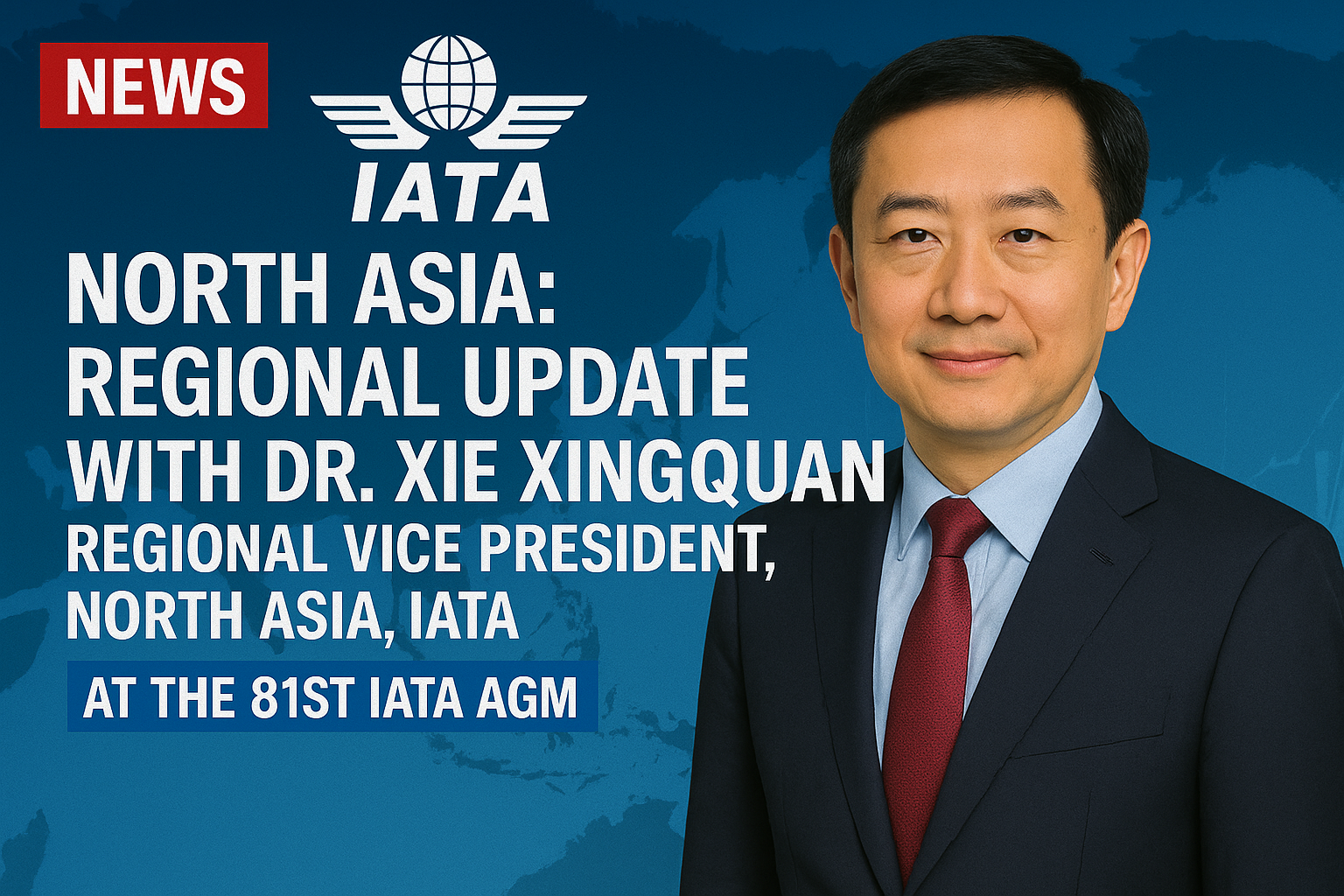In a regional update at the IATA 81st Annual General Meeting, Dr. Xie Xingquan, Regional Vice President for North Asia at IATA, painted a picture of both promise and pressure for the region’s airline sector. While passenger demand is rebounding strongly, thin profit margins persist, driven by complex geopolitical and market dynamics.
Growth Returns, But Financial Performance Lags
Dr. Xie noted that the Asia Pacific region is projected to lead global growth in air travel, with significant market potential continuing to emerge. “We are quite positive for the potential,” he said. However, financial performance has not kept pace.
“The profit margin is not so ideal,” he admitted. A confluence of challenges is suppressing profitability — among them, lingering geopolitical tensions, especially between China and the United States, which have limited the recovery of key international routes.
Domestically and in short-haul markets, overcapacity has intensified competition, resulting in “furious” fare wars. “Airfares are relatively low and below the market average,” Dr. Xie explained. At the same time, operating costs remain elevated, with rising charges for airports, navigation services, and labor. “Costs are still very high,” he said bluntly.
Strategic Priorities: Sustainability, Safety, and Smart Transformation
Looking ahead, Dr. Xie outlined a future-focused strategy for North Asia’s aviation sector, centered around sustainability and digital transformation.
“The goal is greener aviation,” he emphasized, referencing ongoing regulatory and policy work to promote sustainable fuels and energy. Notably, China has made major strides in enabling renewable energy licensing and policy innovation, positioning itself as a global example.
Digital transformation is another pillar. “Our priority is to help the regulators and industry create sustainable, efficient, and facilitative policies,” he said. IATA’s digital initiatives, including One ID and One Record, are already being piloted in the region. Hong Kong International Airport is leading the global pilot for One ID, setting the standard for seamless passenger identity management.
North Asia is also a global leader in digital cargo innovation, spearheading IATA’s smart cargo programs, and laying the groundwork for a more resilient and transparent supply chain in the post-pandemic world.
World-Class Safety Performance
Dr. Xie celebrated North Asia’s standout performance on safety. “North Asia was the safest region in 2024,” he said proudly. He urged the continued sharing of operational data through IATA’s Global Aviation Data Management (GADM) platform to maintain and improve global standards.
Conclusion
With rising demand, strategic innovations, and an emphasis on sustainability and safety, North Asia’s aviation sector is on a promising trajectory. Still, Dr. Xie’s message was clear: unlocking the region’s full economic potential will require careful management of capacity, cost pressures, and international cooperation.
As the region continues to lead in digital transformation and green policy development, North Asia may yet chart a path that not only recovers, but redefines the future of air transport.





